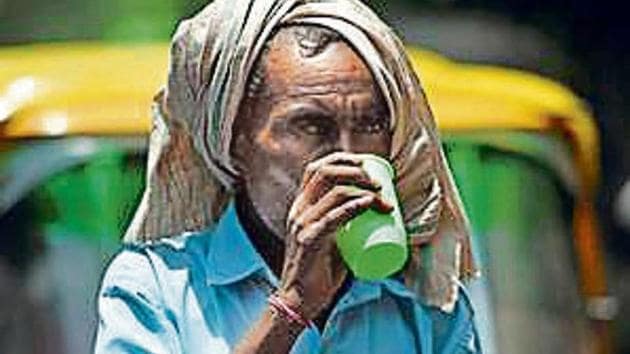Heatwaves push up power demand in Delhi
The average energy demand during the heatwave in 2019 was 25% higher than the average demand in the preceding week.
Heatwaves pushed up Delhi’s energy demand by at least 25%, a new study done by the Centre for Science and Environment has said.

The average energy demand during the heatwave in 2019 was 25% higher than the average demand in the preceding week. The demand dipped after the heat spell. Similar trends were observed in 2018.
This year, Delhi encountered an unusually long and dry heat spell in June, not encountered since 2011. The temperature at the India Meteorological Department’s (IMD) Safdarjung observatory, taken to be a representative of Delhi’s weather, touched 45.6 degrees Celsius, the highest temperature recorded after 2003.
At Palam, it touched 48 degrees, which is the second highest day temperature the airport area had seen after May 1998 when the mercury shot up to 48.4 degrees Celsius.
The study analysed data of Delhi’s electricity consumption over the past eight years (2010 – 2018). Long-term electricity consumption patterns in Delhi shows that electricity consumption during summer starts to rise exponentially, only after the daily heat index (a combination of heat and humidity) crosses the 31-32 degree mark.
“If the growing discomfort due to increasing heat is not addressed with wide-ranging architectural design solutions, mixed use of cooling approaches (including less energy-intensive devices like fans) and improved energy efficiency of mechanical cooling methods, energy security and climate change mitigation efforts will be deeply undermined,” said Anumita Roychowdhury, CSE executive director (research and advocacy).
The study says heatwaves in Indian cities have intensified because of heat island effects, increase in air pollution, and heat exhaust from traffic and air-conditioning. Delhi’s urban areas experience, on an average, 2.3 more heatwave days than rural areas every summer.
According to power utilities in the national capital, cooling load (ACs, fans and coolers) is the main reason behind the increase in Delhi’s power load.
“In fact, according to estimates, almost 50% of Delhi’s power demand in summers is because of the cooling load. Air-conditioning can account for 30%-50% of a company’s or household’s annual energy cost,” said a BSES spokesperson.
The CSE study suggested that urban heat action and mitigation plans should be developed to reduce the urban heat island effect. It suggested adopting cooling designs through effective use of shading and ventilation to reduce the use of air conditioners and coolers.

Stay updated with all top Cities including, Bengaluru, Delhi, Mumbai and more across India. Stay informed on the latest happenings in World News along with Delhi Election 2025 and Delhi Election Result 2025 Live, New Delhi Election Result Live, Kalkaji Election Result Live at Hindustan Times.
Stay updated with all top Cities including, Bengaluru, Delhi, Mumbai and more across India. Stay informed on the latest happenings in World News along with Delhi Election 2025 and Delhi Election Result 2025 Live, New Delhi Election Result Live, Kalkaji Election Result Live at Hindustan Times.





